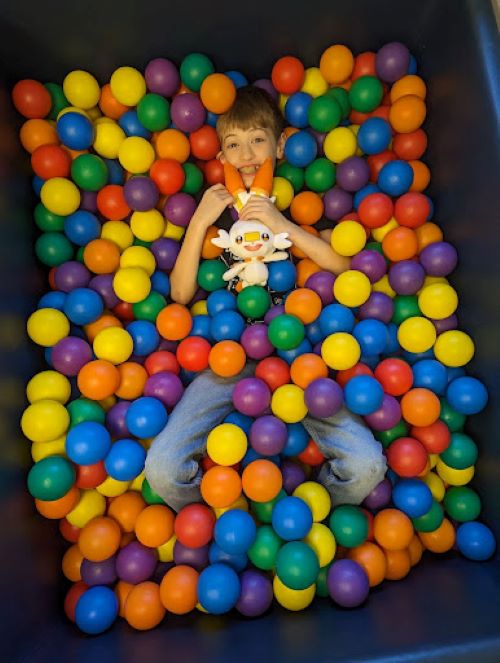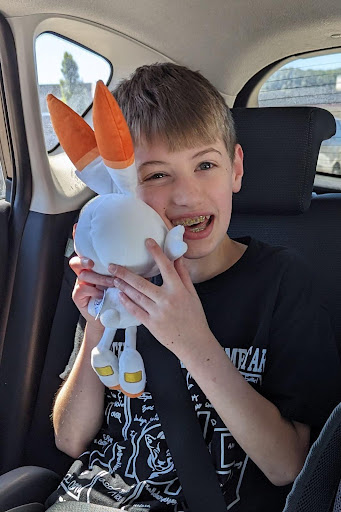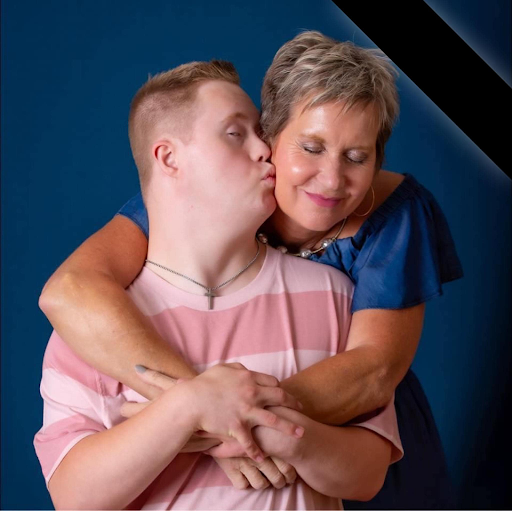Difficulty with transitions, needing extra time on activities, having problems with writing and communicating, and learning appropriate interactions with peers— these are just a few of the struggles we started noticing in our son, Phillip when he was young.
At age three, Phillip couldn’t verbalize more than one or two-word sentences. When your child can’t communicate with you, it’s heartbreaking.
Around this time, more challenges started to unfold. Phillip struggled with balance and overall awareness of his body. He couldn’t easily recognize dangerous situations—it was not uncommon for him to run on icy surfaces and jump from high places, and he had no concept of “stranger danger.”
As parents, we were constantly on high alert.
Transitions between activities or locations were tough. His ability to switch gears to a new activity felt nearly impossible. Because he struggled with communication and his actions weren’t always appropriate, it was hard for Phillip to connect and build friendships with his peers.
At first, we thought Phillip had ADHD or a sensory processing disorder like his younger brother. We suspected the same diagnosis because so many of Phillip’s actions and challenges mirrored his brother’s.
After an evaluation, however, he was formally diagnosed with autism and anxiety—we knew he needed a lot of support to manage his struggles.
Financially, we were already struggling to pay for therapy for Phillip’s brother, and I was receiving support for my mental health challenges. Our budget was stretched to its limit— we were tapping into all our resources.
We knew therapy was necessary because we were already seeing the impact ourselves.
Phillip started occupational therapy with the Center for Childhood Development. It wasn’t long before we started to see his positive changes:
- Phillip now has the courage to do things that used to feel “too hard to even try“—we’re proud of this!
- With improved coordination, he can now ride a two-wheel bike—this is a BIG accomplishment!
- Phillip’s ability to focus has made a big difference in learning at school—it’s rewarding to see his success!
- Transitions are still difficult, but as a middle schooler, he manages the shift between teachers and classrooms—this is a HUGE accomplishment!
- Phillip is better equipped to manage situations and communicate his emotions—there has been such a positive shift in our family dynamic, and now less stress!
Many of Phillip’s milestones didn’t unfold naturally. They took a lot of intentional work and direction. He’s learned “tools” and strategies for self-awareness that helped pave the way toward showing his personality and engaging with his peers.
We were also able to take the “tools” gained from occupational therapy and use them in our home and the school setting—he now has the appropriate accommodations he needs to be successful. He’s now learning and functioning similarly to his peers!
Scholarships from Family Hope Foundation have alleviated my financial strain. There have been so many moments when I felt like I couldn’t keep up with Phillip’s therapy expenses—they felt overwhelming and impossible to pay. But then, in the hardest of times, Family Hope Foundation has stepped in and helped make therapy possible. I’m incredibly grateful.
We learned so much through therapy. With all the support, strategies, and physical accommodations we can provide at school and at home, Phillip has experienced tremendous growth. His occupational therapy has been essential to his overall well-being. Through therapy, Phillip has become a high-energy kid who loves playing outdoors, swimming, role-playing, and anything to do with Pokémon. He’s come a long way— we’re so proud of him!
-Phillip’s mom, Susan







